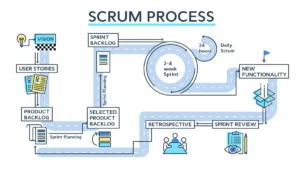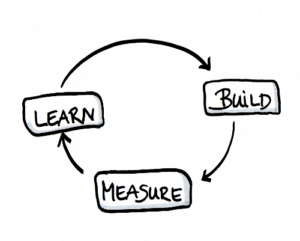Management plays a critical role in the success of a Lean/Agile workflow. To fully realize the benefits of this methodology, management must be willing to shift from a traditional top-down, command-and-control approach to a more collaborative and empowering one. Here are some specific changes that management needs to make to benefit their organization:
- Embrace a Servant Leadership Style: In an Agile environment, the manager’s role is not to micromanage, but to support the team and remove obstacles that may be preventing them from doing their best work. This requires a shift in mindset from a directive approach to a more collaborative, supportive one.
- Promote Cross-functional Collaboration: Agile teams are made up of people with different skills and expertise. Management should encourage cross-functional collaboration, which fosters a sense of ownership and shared responsibility among team members. This includes breaking down departmental silos and encouraging the sharing of knowledge and expertise.
- Create a Culture of Continuous Improvement: Agile is all about experimentation and iteration. Management needs to foster a culture of continuous improvement by encouraging teams to learn from their mistakes and adapt quickly. This means that failure is not seen as a negative, but as an opportunity to learn and improve.
- Empower Teams: Agile teams are self-organizing and self-managing. Management should empower teams to make decisions and take ownership of their work. This includes giving them the autonomy to prioritize their work and make decisions that are in the best interest of the project.
- Focus on Delivering Value: In an Agile workflow, the focus is on delivering value to the customer. Management should encourage teams to focus on delivering features that are valuable to the customer and avoid getting bogged down in unnecessary features or functionality.
In conclusion, a Lean/Agile workflow requires a fundamental shift in management style. Managers need to embrace a servant leadership approach, promote cross-functional collaboration, create a culture of continuous improvement, empower teams, and focus on delivering value. By making these changes, management can benefit their organization by improving productivity, reducing waste, and delivering products that meet customer needs.
Further Reading
- “How Spotify Balances Employee Autonomy and Accountability” by Harvard Business Review – https://hbr.org/2021/09/how-spotify-balances-employee-autonomy-and-accountability
- “Agile at Scale: A Bank’s Transformation Story” by McKinsey & Company – https://www.mckinsey.com/business-functions/organization/our-insights/agile-at-scale-a-banks-transformation-story
- “How We Used Agile to Transform Our Company Culture” by Forbes – https://www.forbes.com/sites/forbestechcouncil/2021/02/12/how-we-used-agile-to-transform-our-company-culture/?sh=5d51ab026b6c
- “How GE Digital Built an Agile Culture” by Harvard Business Review – https://hbr.org/2018/05/how-ge-digital-built-an-agile-culture
- “How Agile Methodology is Transforming Business” by The Economist – https://www.economist.com/business/how-agile-methodology-is-transforming-business/21810973
Discover more from AJB Blog
Subscribe to get the latest posts sent to your email.






